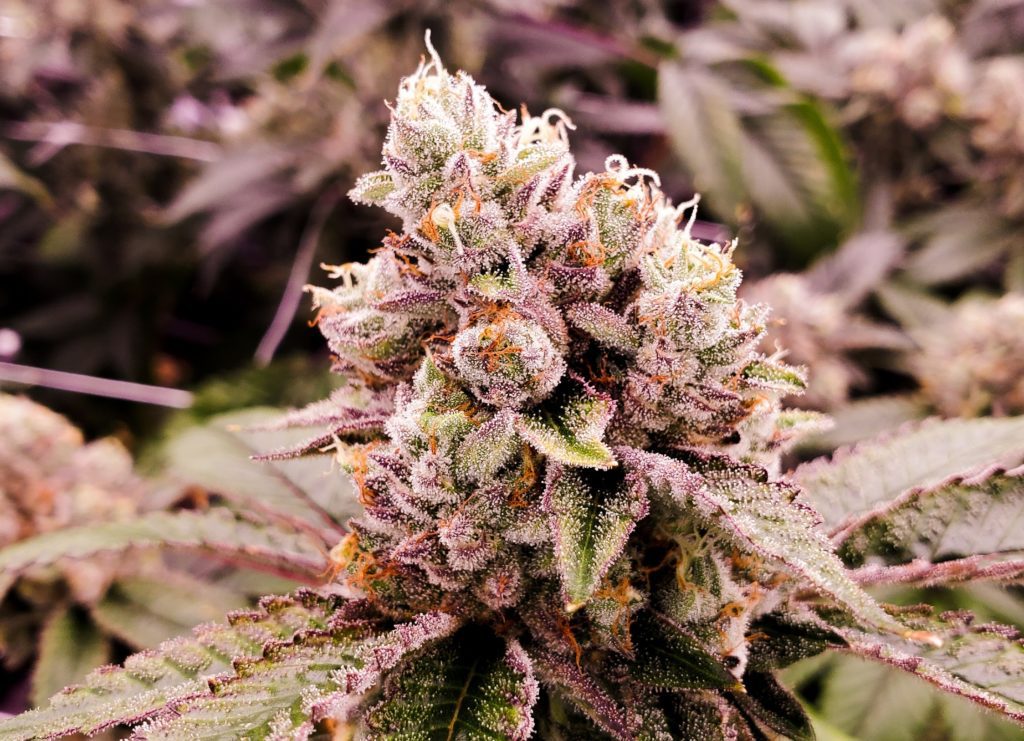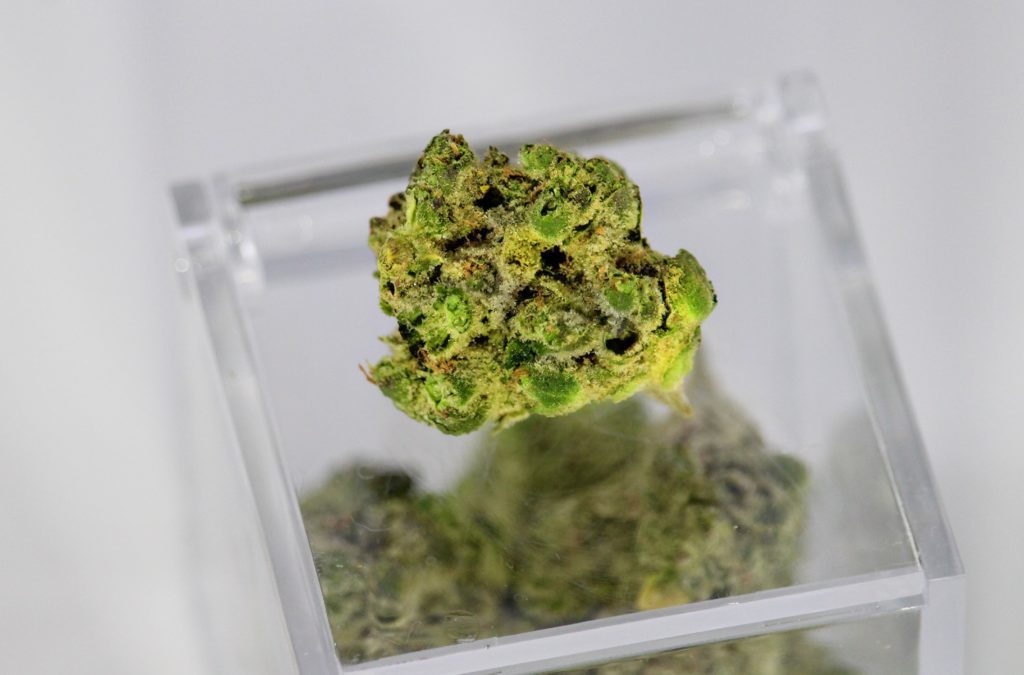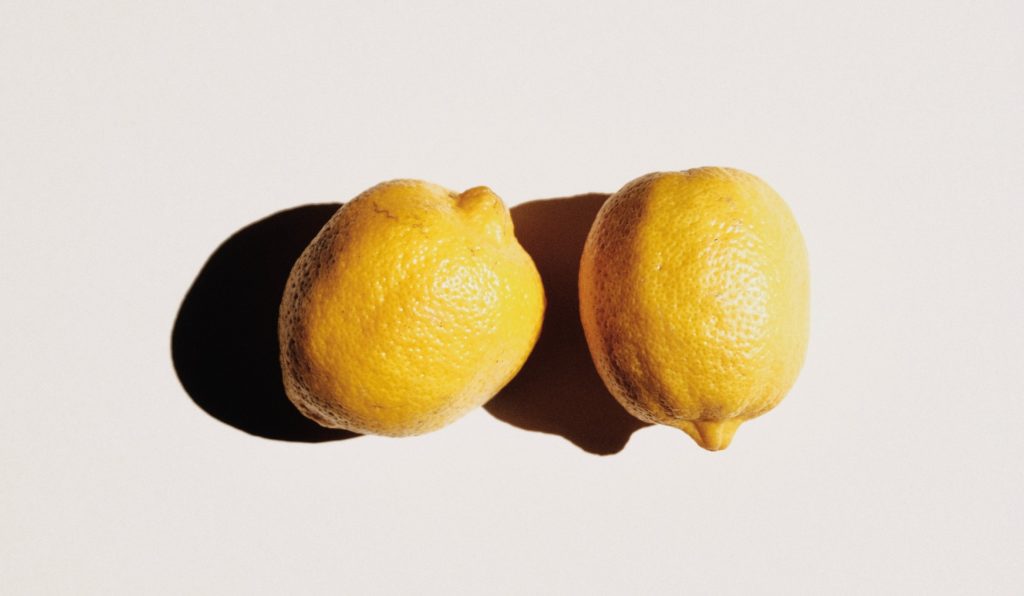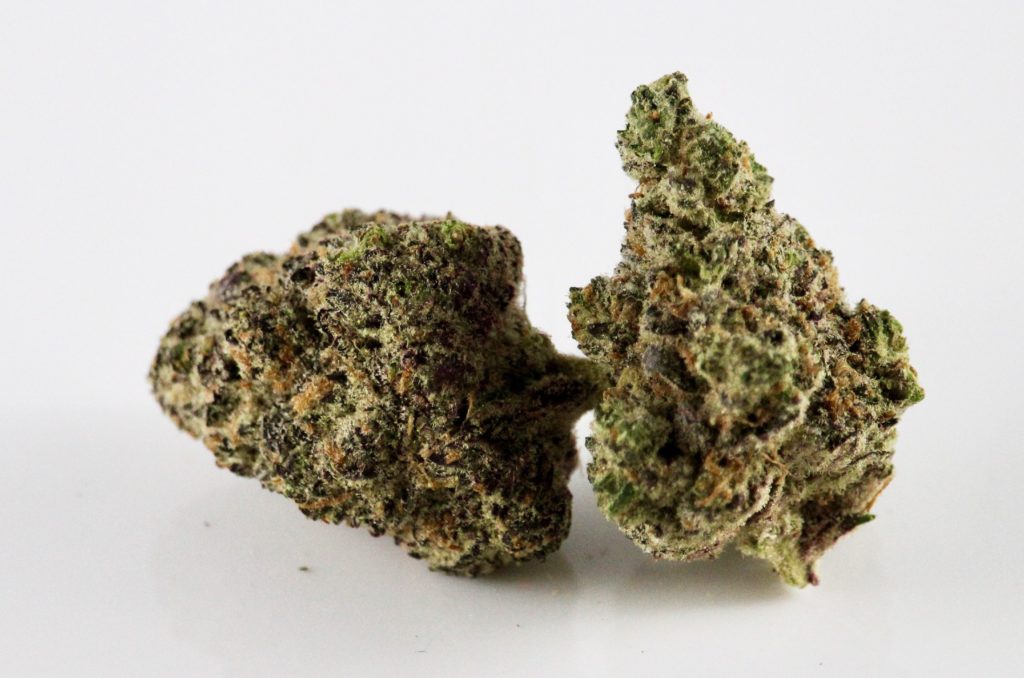Terpenes: What Are They and What Are Their Benefits?
Before science caught up to street cannabis culture, nobody had any idea what terpenes were. “That smells dank,” “that smells good,” or “that smells like cat piss” were some of the only words consumers had to express the way our senses reacted to terpenes.
Terpenes are what compose the unique aromatic profile of each strain of cannabis. Smell and taste are intertwined senses, so terpenes also impact the flavor of cannabis. You might not realize just how much terpenes influence your high.
There are over 20,000 known terpenes. Cannabis contains at least 100 of these terpenes. These minor terpenes may not play significant roles on their own, but they’re more than capable of working together. These terpenes are only a few major players in the game of cannabis aromatics.
Outside of appealing to your personal tastes, terpenes also impart additional benefits to your weed. While they’re not quite as important as the benefits of THC or cannabinoids, studies have increasingly come out to back the entourage effect and how crucial terpenes are to aid in different highs and ailments. It’s kind of a complex symphony of compounds working together, but that’s what we’re here for.
Table of Contents
- What are terpenes?
- How are terpenes different from cannabinoids?
- How do cannabinoids work?
- How do terpenes work?
- Do terpenes affect your high?
- What are the health benefits of terpenes?
- What are the most common cannabis terpenes?
- How do you know which terpene will be the best for you?
- Cannabis strains with interesting terpene profiles
- Order terpenes and cannabis online
What are terpenes?
A terpene is an “isometric hydrocarbon.” For simplicity’s sake, we’re going to call terpenes aromatic oils. At their core, they are oils that produce a strong and distinctive smell that naturally occurs within plants and trees.
Cannabis is only one plant on a long list of plants that produce terpenes. Anything that naturally produces an essential oil or a resin will produce terpenes. Turpentine is made of tree terpenes. That’s where the distinctive, piney smell comes from. Every essential oil you use in your diffuser or your lotions is packed with terpenes. Most plants and fruit contain terpenes. They’re the reason they smell so good.
Some plants, like cannabis, contain hundreds of different types of terpenes. They occur at varying levels, so you’ll never perceive them equally strain-to-strain. You may never be able to smell some of them, as unique types of terpenes attract only the senses of bees or predatory animals.
Plants produce these terpenes to keep themselves alive. The smell each plant produces is designed to attract the right pollinators and repel the biggest predators. Unfortunately for cannabis and flowers, plants have not been able to outsmart humans. Like other creatures, we desire to harvest them.

How are terpenes different from cannabinoids?
Terpenes are different from cannabinoids in every possible way. Cannabinoids only occur in a few plants, with cannabis being the most noteworthy. They also occur in hemp, broccoli, black pepper, cinnamon, cloves, oregano, kale, and sprouts. Terpenes occur in every single one of those plants.
The most noticeable overlap of cannabinoids and terpenes is between cannabis and oregano. That might be why so many kids in high school are tricked into buying bags of oregano. The aroma from the oregano terpenes reminds them of weed, and if they haven’t seen a lot of weed, they may not be able to spot the difference. This is where the similarities start and end.
A terpene cannot affect your body the same way a cannabinoid can, only through different means. Cannabinoids work with the receptors of your endocannabinoid system to support your body’s natural processes. Terpenes work with your body through aromatherapy.
RELATED: How to Make Cannabis Olive Oil (Or Any Oil)
How do cannabinoids work?
Your central nervous system is loaded with cannabinoid receptors. Cannabinoids interact with these receptors to produce certain effects. When cannabinoids bind with these receptors, they influence the way that cells send or receive certain messages. Research shows that this cellular interaction is often positive.
Cannabinoids can work to naturally improve your mood. Many people use cannabinoids in the form of weed or CBD to promote relaxation and induce feelings of calmness or euphoria. They may stimulate the appetite, reduce pain, inflammation, and on occasion, cause the side effect of dry mouth. Research has found cannabinoids can also help your body prepare for and regulate its sleep cycles.
Scientists are only beginning to understand the full depth of how the human endocannabinoid system works. These researchers are exploring the system and observing its effects, using cannabinoids in studies, and evaluating CB1 and CB2 receptors. While CBD research has massively expanded in the last decade, cannabis research is still prohibited federally. So those few rare studies in the U.S. don’t receive grants or any means of government funding and are wholly privately funded in legal states. Canada has opened its research for every cannabinoid in cannabis since it was legalized federally in 2018. This means accredited studies on cannabis, THC, and its effects have been pouring out of Canadian universities and institutions. The endocannabinoid system’s impact on our overall health is still being thoroughly researched across the world.
We are born with an endocannabinoid system and cannabinoids exist inside of our bodies. “Endogenous” means internal or within, while “exogenous” means outside of or without. Cannabinoids you get from outside of your own body are exogenous cannabinoids. There are hundreds of exogenous cannabinoids, 140 estimated cannabinoids exist in cannabis alone, and we’ve yet to fully understand them all.
The cannabinoids your body produces internally are called endogenous cannabinoids. Cannabinoids are biologically linked to our gastronomical processes and are even found in mother’s milk. The two most important endogenous cannabinoids the human body produces are AEA (anandamide) and 2-AG (2-arachidonoylglycerol). Your body makes them and uses them immediately. They don’t hang around, so there’s no way to know how much we make and how much we use. Typical levels or healthy levels of these cannabinoids are virtually impossible to measure.
We know that scientists have linked the endocannabinoid system to metabolic processes, pain relief, and inflammatory reduction, mood and stress levels, function of the liver, skin, nerves, muscles, bones, cardiovascular system, and sleep.
How do terpenes work?
Terpenes can influence your mood. Their smell alters your perception of cannabis or any other plant they exist within. Some terpenes may be uplifting, energizing, or soothing. You catch a whiff of them, and they can literally change your mood by stimulating smell receptors in the nose, which communicates with the nervous system and part of your brain that controls mood.
In some cases, terpenes pose potential health benefits. Certain terpenes have been studied in high concentrations to test their effect on inflammation, heart disease, inhibiting harmful enzymes associated with diabetes, and regulating appetite. Most of these studies weren’t extensive and haven’t been repeated.
The studies that took place seem to suggest there’s a meaningful link between terpenes and health, but we need more studies to call these findings definitive. Answers will grow and evolve as research on terpenes continues to be approved and funded.
Terpenes have a valuable function, even though their value doesn’t seem as monumentally crucial as cannabinoids.
Do terpenes affect your high?
Terpenes can affect your high, mostly through what is known as the entourage effect. The entourage effect is what occurs when every compound in the plant naturally works in unison to maximize its effects in synergy.
Terpenes play an important role in the entourage effect. When you use a cannabis product of any kind, including CBD oil, you’re looking to get the maximum amount of benefits from that product. This is especially important for people who want to maximize the efficiency of CBD for its wellness support. When you start removing compounds or oils from the plant, like terpenes, THC, or other cannabinoids, you’re changing the way the plant works.
Certain terpenes work in conjunction with cannabinoids, helping them enter the system more efficiently. Taking away something (like the THC or the terpenes) is going to pull a crucial link from that chain reaction. Products that are called “full-spectrum” or “whole-plant extracts” use the entire plant’s cannabinoids and terpenes, therefore tapping into the power of the entourage effect.
We do know from an aromatherapeutic perspective that terpenes can affect your mood. In a roundabout way, your mood affects your high. If you’re high and in a good mood, it’s all smooth sailing. Researchers are still trying to determine why different strains of cannabis, even closely related sativas or closely related indicas, can have such different effects. They believe terpenes may play an important role in why some people are partial to certain strains and reluctant to use others.
Even though we aren’t sure exactly how terpenes relate to your high, we do know that the entourage effect requires the contents of a cannabis plant’s extract remain untouched. That’s a good enough reason to leave the final product as whole as possible.

What are the health benefits of terpenes?
Terpenes can be beneficial to your wellbeing, albeit their methods differ from cannabinoids. Terpenes are the key players of aromatherapy, the entourage effect, and they may help work to combat inflammation within your body. This is true for all terpenes you encounter—not just the terpenes in cannabis.
Aromatherapy mood enhancement
Aromatherapy is often disregarded as a new-age ritual. But the science backing aromatherapy is solid. We know how it works and we know why it works. It’s a very simple thing, but for many people, it can make a world of difference in the way that they feel.
Before you write off your friends who sling essential oils or swear that they can fix everything, it’s important to understand the scientific basis for that theory. Although essential oils aren’t going to solve disorders, research shows that the scent interacts with your brain and can make you feel better.
The simplest explanation for the way aromatherapy works is that it’s a sensory distraction. If you’re in a bad mood or if you’re feeling discomfort, there are several things you can do to mitigate your situation.
One of those situations is taking medications or supplements. Prescription medications, as well as over-the-counter medications, can be used to calm you or mitigate painful sensations. If the pain or unfavorable mood is fleeting or otherwise not significant enough to warrant such a drastic step, many people prefer to avoid pharmaceuticals if possible.
Aromatherapy is capable of relieving some discomfort, pain, or ailments without the use of medication. Aromatherapy is used as a positive distraction to change your mood, often in conjunction with mindful practices like meditation or yoga. You clear your mind and focus on the way an aroma positively impacts the way you’re feeling.
Every aroma used in aromatherapy comes from terpenes. Rose may make you feel romantic. Mint might make you feel invigorated. Lavender is known to produce a calming feeling. Jasmine flower and citrus oils are used to uplift the mood. You smell the terpenes, and they send messages to your olfactory senses and the limbic system in the brain that can modify your mood and emotions.
Cannabis terpenes aren’t any different from the terpenes in your average essential oil. The benefit of the terpenes in cannabis is that they add an aromatherapeutic element to your smoke session. You’re smoking because you want a positive experience. You want your weed to do something to shift your mood or the way you feel in a positive direction. The CBD and THC will do the bulk of the heavy lifting, but the terpenes definitely help.
Reducing inflammation
Beta-caryophyllene, or BCP for short, is a terpene that occurs in cannabis. When you use cannabis with this terpene in it, the cannabinoids are binding themselves to your CB1 and CB2 receptors. There is some evidence to suggest that BCP binding to those receptors is beneficial.
BCP is still being studied as a potential anti-inflammatory, and the results so far are promising. The FDA is willing to recognize terpenes as safe, but they aren’t yet willing to declare BCP as an effective anti-inflammatory. The FDA is notoriously slow with terpene and CBD research and is federally prohibited from researching THC or cannabis plants. In the meantime, you can rely on accredited private studies and those from other countries, like Canada, to fill in the gaps in research.

Common cannabis terpenes
There are hundreds of terpenes in cannabis alone. Most of them are undetectable to the human sensory system, as their presence is so minuscule that they make a very subtle impact. The most bountiful terpenes are the ones you’re most likely to notice, and their prevalence dictates the efficacy, aromatic effects, and flavor profile of your weed.
While many terpenes have been studied for their benefits and effects, these studies typically used high amounts of pure terpenes. The concentrations used were much higher than the concentrations you’d normally find in weed. This is something you’ll want to consider when reviewing the benefits of terpenes. Yes, there are benefits. Can you experience them from your weed? The amount of terpenes means, it will depend.
Limonene
Limonene is a terpene named for its high presence in citrus fruits. Grapefruit, oranges, lemons, limes, and bergamot contain limonene in their zest. This is a pleasant, uplifting smell that most people associate with cleanliness. In fact, limonene is often added as a natural fragrance to household cleaning products.
What are the benefits of limonene?
Pure limonene has naturally occurring antifungal and antibacterial properties. These properties, in addition to its pleasant scent, are the reason why household cleaners are often formulated with limonene.
The scent of limonene is associated with mood elevation and stress relief. Inhaling vaporized limonene has been shown to boost levels of feel-good chemicals like dopamine and serotonin, especially in areas of the brain that can be negatively impacted by anxiety and depression. Researchers are still looking into this phenomenon to better understand why it happens.
Limonene can also help your body to absorb other terpenes through the skin or soft tissues. It lends a helping hand to its terpene friends.
Limonene-dominant cannabis strains
- Strawberry Banana
- Wedding Cake
- Banana OG
- White Fire OG
- Lemon Skunk
Myrcene
Myrcene is abundant in cannabis and hops. If your weed smells or tastes like beer, you likely have a myrcene-dominant strain. It’s kind of spicy, a twinge fruity, a bit sour, floral, and a little bit like black pepper. It also occurs in thyme and lemongrass. You’re tasting myrcene in a lot of French or Thai cuisine.
What are the benefits of myrcene?
Myrcene has been studied for its ability to prevent DNA damage by acting as an antioxidant or enhancing the antioxidant effects of other terpenes.
Myrcene has been important to ancient medicine and folk remedies for centuries. Some cultures have used plants high in myrcene, like hops or lemongrass, as alternative muscle relaxers or sleep aids. Whether or not they’re actually effective for that purpose is a little murky. We still need more research to fully understand these potential benefits.
Myrcene-dominant cannabis strains
Myrcene is a dominant terpene in nearly half of all modern cannabis strains. It’s harder to find weed that doesn’t have any noticeable myrcene in its profile. If you’re seeking the flavor and aroma of myrcene specifically, there are a few strains that bump its spicy goodness to the forefront.
- Blue Dream
- Purple Urkle
- Grape Ape
- Granddaddy Purple
- OG Kush
Humulene
Humulene has a lot in common with myrcene. They’re both heavily abundant in cannabis and in hops. Humulene has a woody, spicy, earthy aroma that composes its aromatic backbone. It’s also present in sage and ginseng. Taking a whiff of a freshly harvested sage leaf will give you a great idea of humulene’s aromatic profile. It smells like the forest after a long rain.
What are the benefits of humulene?
Humulene has anti-inflammatory and antibacterial properties. It also has been demonstrated to be an effective appetite suppressant. This is where things get interesting. Most cannabis is inherently an appetite stimulant. If you’re looking to evade the munchies and save a few inches around your waistline, it may be worthwhile to try high-humulene strains.
It’s unknown if the appetite suppressant effects of humulene in small amounts are strong enough to counteract the appetite stimulant effects of other cannabinoids, but it may be worth a shot.
RELATED: The Best Haze Strain Varieties To Try
Humulene-dominant cannabis strains
- Sherbert
- Thin Mint
- Maui Wowie
- Headband
Terpinolene
Terpinolene is a minor terpene found in cannabis. Apples, lilac flowers, tea tree leaves, oil, nutmeg, and cumin are all rich in terpinolene. Terpinolene is sweet but simultaneously woody. It’s a unique and complex aromatic that, simply put, is very interesting to the senses. It’s the reason why an apple pie tastes special. It’s why lilac fragrance makes your home feel warm and cozy. It’s the reason that Indian dishes are so tasty.
What are the benefits of terpinolene?
Terpinolene’s aroma is warm and fresh. It’s commonly used to make soap and household cleaners smell nice. The scent, when coupled with the terpenes antibacterial properties, make it perfectly fit for the bill. Another advantage of its fresh scent is that, while it smells wonderful to humans, insects seem to hate it. It keeps bugs at bay.
From a medical perspective, terpinolene is currently being investigated as a potential deterrent for heart disease. The science is still out, but the research seems promising.
Terpinolene-dominant cannabis strains
- Jack Herer
- Orange Cookies
- Ghost Train Haze
- Dutch Treat
Ocimene
Ocimene is a dynamic terpene. It’s a little minty, citrusy, and woody, with notes of vibrant fresh greens. It’s present in mint, parsley, lavender, basil, orchids, and bergamot. It gives foods and perfumes that jolt of fresh, natural, lively aroma.
What are the benefits of ocimene?
Ocimene has been studied more thoroughly than other terpenes. Research shows that high levels of ocimene are effective at combating inflammation. It responds to inflammatory agents secreted by the immune system, cutting them off at the pass and prohibiting them from causing an inflammatory response.
Ocimene also works to inhibit harmful enzymes present in people with type 2 diabetes. The study used ocimene derived from black pepper, which happens to be another natural source of cannabinoids.
While these studies show great effects, it’s important to remember that ocimene’s presence in weed is minimal. It’s an extremely minor terpene that doesn’t occur at meaningful levels in most strains of cannabis. It’s best not to assume that cannabis containing ocimene is a panacea.
Ocimene-dominant cannabis strains
Ocimene is almost never the most dominant terpene in cannabis. It naturally occurs in such low amounts that it would be fairer to characterize it as an afterthought. The terpene profiles of some strains allow ocimene to shine a little more brightly.
- Dutch Treat
- Green Crack
- Amnesia
- Strawberry Cough
Linalool
Linalool is a terpene you come into contact with more than you probably realize. It’s added to almost everything that’s intended to smell good. Fabric softener, shampoo, deodorant, hand soap, lotion, household cleaners, air fresheners, dryer sheets, and perfume often contain linalool.
It’s so popular because it’s a strong and agreeable aromatic. Linalool naturally occurs in lavender, basil, birch bark, tea, nutmeg, mandarin orange, cinnamon, spearmint, and even cilantro. It’s a versatile, sweet floral known for its aromatherapeutic qualities. Most importantly, the aroma of linalool is associated with stress relief.
What are the benefits of linalool?
Tests on linalool using mice had unique findings Researchers learned that mice exposed to linalool are more patient when they’re scared. This is a very odd thing to test for and even weirder to record in detail, but it demonstrates that linalool can help to mitigate anxiety levels and stress response.
Linalool-dominant cannabis strains
Although most cannabis contains some linalool, very few cannabis strains contain a lot of linalool. It largely plays a backstage role in your weed’s aromatic profile. Here are some fan-favorite strains that do contain a linalool profile.
- Zkittlez
- Do-Si-Dos
- Amnesia Haze
- LA Confidential
- Pink Kush

How to know which terpene will agree with you?
You might encounter a weed that tastes familiar, but you just can’t put your finger on it. It may have the same terpenes as the spices in your grandma’s holiday cookies or your ex-girlfriend’s organic shampoo. It might have the terpenes that contribute to the flavor of your favorite wine, as many wines contain the exact same terpenes as cannabis.
You’ll know very quickly which terpenes will and won’t agree with you. It’s simple: smell the weed. If you hate the way it smells, don’t smoke it. Your sense of smell is key. The nose knows, and it’s trying to tell you something.
You’ve evolved a sense of smell to detect pheromones, valuable food sources, decaying animals or organisms, the presence of disease, and even poison. The way you perceive certain smells has less to do with the way they actually smell and more to do with your brain’s memory attachment and assessment of a smell. The same goes with taste.
Cilantro is one such polarizing flavor. Some people could easily eat an entire bushel of cilantro while other people swear that it tastes and smells like soap. How is their perception of it so different from everyone else’s perception?
The same goes for grapefruit. It’s a wildly popular flavor, especially for seltzers and clear liquors. Yet, some people think that grapefruit tastes like chemical solvent or household cleaner. It’s not just that it isn’t delicious to them. It’s that their brain is telling them it’s some kind of dangerous non-food substance.
Scientists aren’t really sure why this happens, but they know it has something to do with your genes. Your ancestors may not have been adapted to tolerate some of the naturally occurring compounds in grapefruit or cilantro, so your brain recognizes them as something non-edible.
Treat your weed the same way. If you’re smelling it and something is telling you not to smoke it, you don’t have to smoke it. Life is too short to smoke cannabis that you hate. If you’re finicky about cannabis, subject everything to a smell test. If the smell makes you feel good, the weed will probably make you feel good.
Cannabis with interesting terpene profiles
Since every plant contains hundreds of terpenes, the terpene profiles are essentially what makes each plant unique. Different strains may have nearly identical THC and CBD percentages. It’s the terpenes that truly separate them.
- Sour Diesel and OG Kush offer a balanced terpene profile with limonene and myrcene at the forefront.
- Blue Dream is a well-rounded cannabis strain, featuring myrcene, linalool, ocimene, and terpinolene in its robust profile.
- Black Jack provides the perfect combination of terpinolene and ocimene and for a vibrant, sweet, and floral kick.
- Gorilla Glue’s unique terpene profile is a strong but bright mixture of peppery myrcene, citrusy limonene, and flowery fresh linalool.
- Super Silver Haze gets its spicy front from myrcene but levels out with an acidic kick from limonene, the woody and earthy notes of humulene, and a small floral boost from linalool. In a lot of ways, Super Silver Haze smells and tastes like a citrus grove.
Terpene profiles are essentially unlimited, and some people may be more perceptive to certain terpenes than others. While Blue Dream contains a symphony of terpenes, the strong myrcene at the front may put off people who don’t like the smell or taste of spicy, peppery weed. Keep in mind, every grower’s Blue Dream variant is slightly different. You might need to try a few strains and brands to find the terpene profile most pleasing to you.
Emjay has all the terpenes you need
Terpenes aren’t the be-all, end-all of cannabis. Aromatic compounds help to soothe your mind and body with their unique flavors and aromas. Researchers are still studying the extent of their benefits from a medical perspective, but most of the findings seem to suggest there’s a little bit of magic to terpenes.
Did you see a strain with terpenes that appeal to you? Just tell us what you want and we’ll deliver it right to your door, along with any accessories or supplies you might need to enjoy your cannabis. Emjay has a wide selection of cannabis flower, concentrates, extracts, prerolls, and edibles that are yours for the choosing. Skunky, sweet terpenes-and-all.
